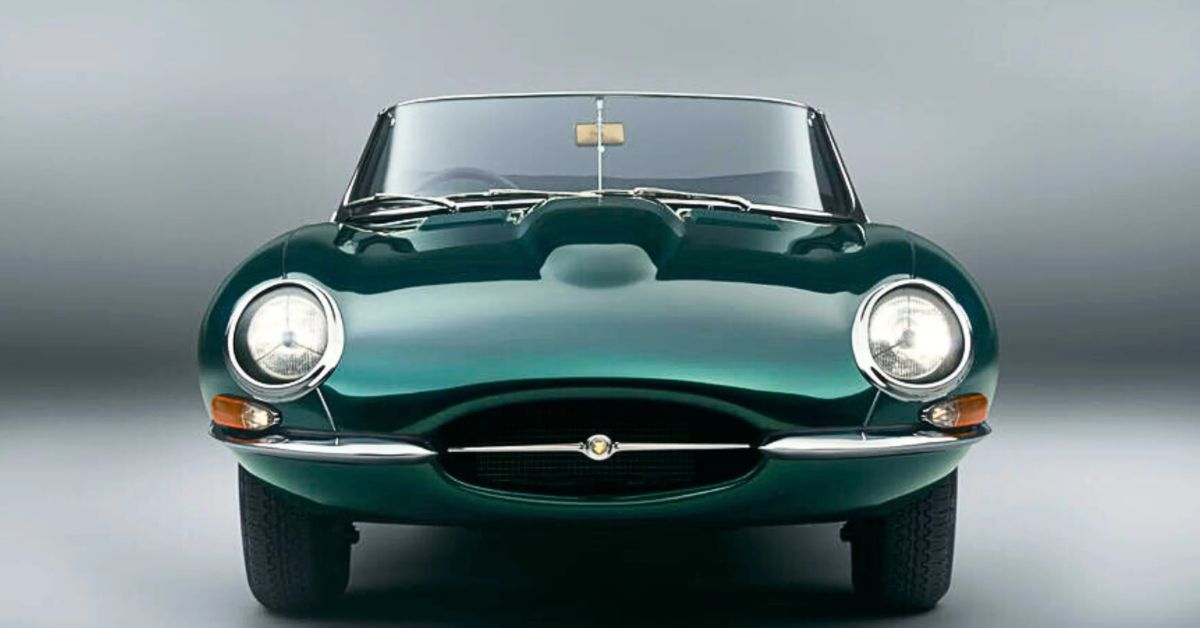Few cars have ever captured the imagination of the public quite like the Jaguar E-Type. Launched in 1961, this British masterpiece wasn’t just a sports car—it was a revolution in design, engineering, and cultural impact. Heralded by many as the most beautiful car ever made, including a rumored nod from Enzo Ferrari himself, the E-Type remains a symbol of elegance, speed, and innovation more than six decades after its debut.
🏁 A Star Is Born: The 1961 Geneva Motor Show
The world first laid eyes on the Jaguar E-Type at the Geneva Motor Show on March 15, 1961. It was a moment that changed automotive history. With its long bonnet, low-slung body, and sensuous curves, the E-Type stunned onlookers and journalists alike. It wasn’t just the aesthetics that impressed—it was the fact that this car, with its race-bred engineering, was priced at a fraction of its exotic rivals.
The E-Type was born from Jaguar’s racing pedigree, particularly the D-Type, which had dominated Le Mans in the 1950s. Designer Malcolm Sayer, an aerodynamicist by trade, applied aircraft principles to sculpt the E-Type’s body, resulting in a shape that was both functional and breathtaking2.
⚙️ Engineering Marvel: Ahead of Its Time
Underneath its seductive exterior, the E-Type was a technical tour de force. It featured a monocoque construction with a front subframe—a radical departure from the ladder-frame chassis common at the time. Independent suspension at both ends, disc brakes all around, and rack-and-pinion steering gave it handling and braking capabilities that rivaled far more expensive cars.
The original Series 1 E-Type came with a 3.8-liter inline-six engine producing 265 horsepower, capable of propelling the car to a top speed of 150 mph (240 km/h) and a 0–60 mph time under 7 seconds. These were staggering figures for the early 1960s, especially for a car that cost just £2,256.
Later models saw upgrades, including a 4.2-liter engine and eventually a 5.3-liter V12 in the Series 3, which added even more power and refinement. Despite some criticisms—such as the Moss gearbox and less-than-stellar brakes—the E-Type’s performance was undeniably thrilling.
🎨 Design That Transcends Time
The E-Type’s design is arguably its most enduring legacy. Its proportions—long bonnet, short rear deck, and low stance—are the stuff of legend. The covered headlights, oval grille, and flowing lines made it look like it was moving even when parked.
It came in three body styles: the Fixed Head Coupé (FHC), Open Two-Seater (OTS), and later, the 2+2 Coupé with a longer wheelbase. Each had its own charm, but the Series 1 roadster is often considered the purest expression of the E-Type’s beauty.
Even today, the E-Type is a fixture on lists of the most beautiful cars ever made. It’s not just nostalgia—it’s a recognition of design that transcends eras2.
🌍 Cultural Impact: The Swinging Sixties and Beyond
The E-Type wasn’t just a car—it was a cultural icon. It became synonymous with the Swinging Sixties, appearing in films, music videos, and celebrity garages. George Best, Steve McQueen, and Brigitte Bardot were among its famous owners, adding to its allure.
Its appearance in the Austin Powers films as the “Shaguar” was a cheeky nod to its status as a symbol of British cool. But beyond pop culture, the E-Type represented a shift in how people viewed sports cars—not just as machines, but as expressions of personality and style.
🔧 Ownership and Legacy
Today, the Jaguar E-Type is a prized classic. Early Series 1 models, especially roadsters, command high prices at auctions and are cherished by collectors. Restorations are common, and a thriving aftermarket ensures that parts and expertise are available for those lucky enough to own one.
Jaguar itself has embraced the E-Type’s legacy, offering “Reborn” versions—factory-restored classics with modern touches. These limited-edition models celebrate the car’s heritage while ensuring its continued relevance.
🏆 Verdict: A Legend That Lives On
The Jaguar E-Type is more than just a car—it’s a piece of art, a technological milestone, and a cultural phenomenon. It redefined what a sports car could be, blending beauty, performance, and accessibility in a way that few have matched since.
Whether admired in a museum, roaring down a country road, or gracing the pages of a collector’s catalog, the E-Type continues to inspire awe. It’s a reminder that great design is timeless, and that sometimes, a car can be more than transportation—it can be a dream made real.

